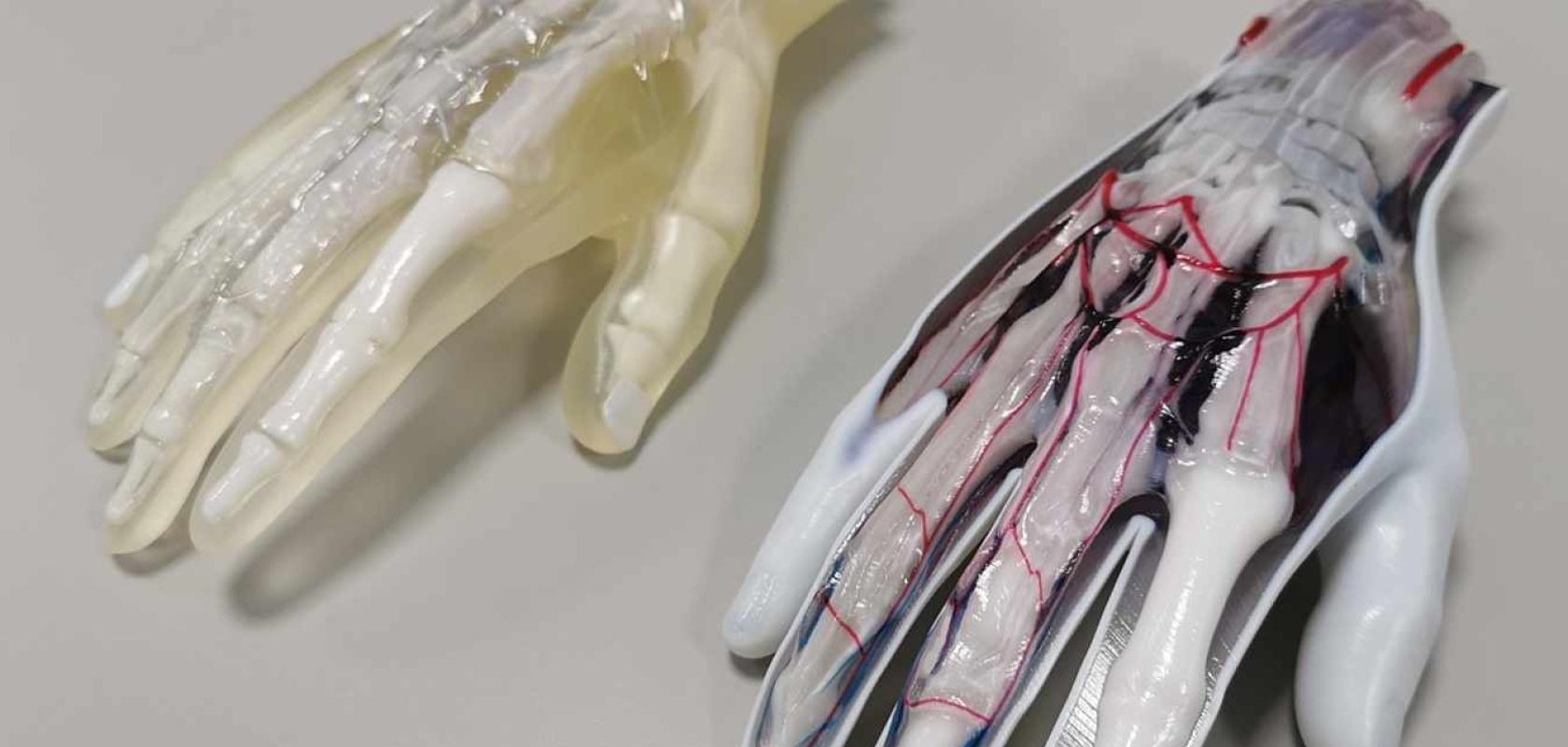A digital anatomy 3D printer has been installed at National Healthcare Photonics Centre, the first of its kind in the UK.
The printer will support medical decision making and aid in the development of new imaging and diagnostic medical devices.
The Stratasys J750 Digital Anatomy 3D printer, installed by Laser Lines, enables the production of realistic body parts based on actual patient-specific scan data.
Multi-material anatomical models constructed using the data captured by hospital imaging systems lets surgical teams, consultants and their patients make better-informed decisions before embarking on surgery or a treatment régime.
Wayne Morton, senior mechanical design engineer at CPI, said: 'Anatomy is incredibly difficult to design and replicate. Trying to model a human with a particular injury or syndrome using traditional techniques is virtually impossible until now.
'The new Digital Anatomy 3D Printer gives us precise control over what we are designing and developing as we can now manufacture model parts directly from data obtained by medical imaging methods such as CT scanning or MRI.'
The centre can now use actual patient data to print several identical copies of that patient’s body part. For example, surgeons who want to be able to practise before an operation takes place, can print a replica of that actual patient’s organ with all of its anomalies. The surgeon can print the part as many times as needed before the procedure. Previously, animal, cadaver, and synthetic models would have been used to practise with, which can be costly and difficult to manage.
Morton added: 'We can convert data from medical scan data, such as MRI, into a solid design file and then be able to print someone’s actual skull, not just something that is an approximation. This is an incredible advance for a surgeon because several copies of that anatomical part can be manufactured enabling the surgeon to plan the procedure and optimise patient care.'
Morton said: 'There are a lot of benefits we will see from the 3D printer, so we are extremely excited to have the first unit in the UK and to be able to share this capability with our partners.'


